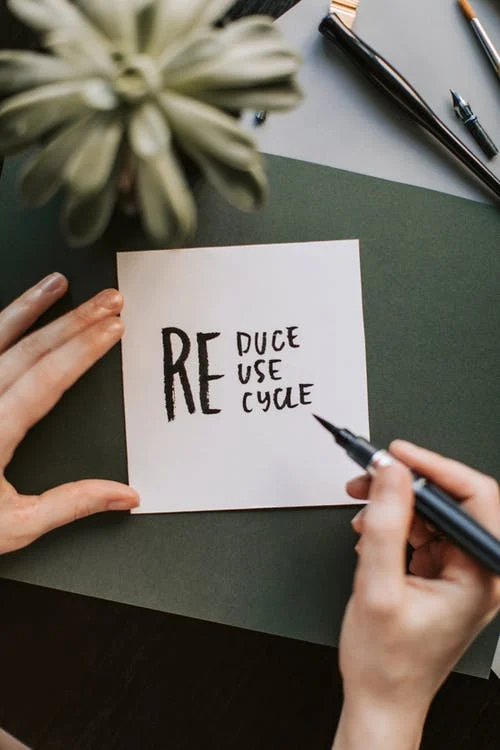What Is Alliteration?
Alliteration is a popular writing technique or literary device that you can add to your text to leave an impact on your readers.

What Does Alliteration Mean?
When a sentence has two or more words successively beginning with the same consonant sound, it features an alliteration.
For example, “Betty Botter bought some butter, but she said, this butter’s bitter; if I put it in my batter, it will make my batter bitter, but a bit of better butter will make my batter better…”
In the above sentence, the first consonant sound is ‘B,’ which repeats itself throughout the sentence, followed by ‘bought butter but the butter was so bitter.’
However, alliteration gives importance to sound and not the letter in general.
For example, ‘Cruel King’ and ‘Photo frame’ are alliterative as the second half of the words carry the same sound as their first halves. However, the word ‘Phenomenal performance’ isn’t alliterative because there is a mismatch of sounds between ‘p’ and ‘ph’.
Note: Remember that alliterative sentences must satisfy the grammatical rules.
Some examples of alliterative sentences include:
- She sells seashells by the seashore.
- The terrible tiger tore the towel.
- The free bird thinks of another breeze.
- The sly slithering snake hisses.
Some commonly used alliterative words include:
- French Fry
- Tough talk
- Super-size
- Fish fry
- Kitty cat
Despite the numerous examples we have seen, alliterations are frequently used with a purpose. Here are some reasons for using it:
Why Do We Use Alliteration?
1. To Create Auditory Interest
The repetitive nature of alliterations gives a rhythmic effect to your text. This enhances your text’s beauty and sets the mood, kindling your reader’s interest. For example, in the movie V for Vendetta, you will see the musical effect of alliterations in dialogue. The character V introduces himself to Evy through a speech constituting alliterations.
Extreme Alliteration in V for Vendetta
Harry Potter Alliterative sentence
2. To Create an Emotional Response
Once you capture your reader’s attention, they consume your content which helps evoke an emotional response. This leaves an everlasting impact on your readers, helping them retain your content for longer.
Here is an example of Joni Mitchell using an alliterative opening song that sets the tone of her message in “Big Yellow Taxi.” She frames her sentences with the ‘p’ words to emphasize the changes in her world and seeks to elicit an emotional effect on her audiences.
3. To Improve Language Comprehension
Alliteration slows down the pace of a sentence and helps listeners comprehend the meaning of the sentence. This allows them to emotionally connect to a text and retain it in their memory.
Poetic Devices: Alliteration – Examples & Meaning
Difference Between Alliteration, Assonance, and Consonance
| Alliteration | Assonance | Consonance |
| Repeated use of the first consonant sound in two or more neighboring words or syllables. | Repeated use of vowel sounds that need not necessarily be an initial sound | Repeated use of consonant sounds that need not necessarily be an initial sound |
| Eg: I can show you the world shining, shimmering, and splendid… (From Disney’s Aladdin) | Eg: The gloves don’t fit, if it doesn’t fit, you must acquit. | Eg: All’s well that ends well |
| The purpose of alliteration is to create mood and rhythm. | The purpose of assonance is to create a rhyming effect. | The purpose of consonance is to appeal to the readers. |
Alliteration, Assonance, and Consonance
The Evolution of Alliteration
The word ‘Alliteration’ originated from the Latin word allīterātiō, meaning “the letters of the alphabet.” Alliterations came into existence while we learned the letter sounds in pre-school.
For example, consider the nursery poem “ Bring your bat and bring your ball. To the park to play”
Additionally, as children, we were constantly exposed to funny tongue twisters like:
- “Sally sells seashells at the seashore…”
- “Peter Piper picked a peck of pickled peppers…
Apart from enhancing our knowledge of phonetics and promoting fast-talking, tongue twisters, and nursery rhymes train our brains to associate meanings for various sounds. This makes us evoke a specific emotional response to a sound. To understand and use alliteration better, you must know the effect of a word’s beginning sound. For this purpose, it is good to acquire basic knowledge of the impact of sound symbolism.
Sound Symbolism: Labeling a Sound
Sound Symbolism is a concept that refers to your association of sound with a particular meaning in speech. Hence, sounds reinforce a word’s meaning and determine the quality of language comprehension. Therefore, it enhances the efficiency of communication.
How are Sound Symbolisms Developed?
Sound symbolism is quite intuitive. Our brain processes sound and decode a sound’s meaning by combining the below-mentioned factors:
- The facial movements associated with specific words
- The awareness of how our mouth and vocal cords form sounds.
Therefore, you must have understood how alliterations emphasize a tone or mood. Now that you know the need for alliterations, you will learn to write them effectively.
How to Write Alliteratively?
1. Pick a Sound That Matches the Mood
Different consonant sounds elicit an emotional response from your readers. These responses can be:
- Positive Responses: Harvest good thoughts about a topic.
- Negative Responses: This type of response forces your reader to take action.
Therefore, you can pick your consonants based on the type of response you want to elicit from your audience. Here is a list ready for your reference:
| Response | Consonants to use | Words to use |
| Positive | b, p, m, n. | become, benefit, popular, process, magnetize, nail, need. |
| Negative | d, t, g, k, z, v, s, f. | dash, decide, take, toll, galvanize, keep, zip, venture, verify, scrutinize, fail, fight. |
2. Create an Impact with Consonant Sounds
As we vocalize a sound, different consonant sounds are produced, which can be delivered either through the vocal cord or based on the passage of air through the mouth.
- Fricatives: Fricatives include consonants that, when pronounced, make the air through the mouth escape with difficulty.
- Sibilants: This group of consonants, when pronounced, closes the space between the roof of the mouth and the tongue.
Here is a list of fricatives and sibilants you prefer to use in your text.
| Vocal Cords | ||
| Voiced Fricatives | z, zs, v, and zh | Zone, Zip, Voice, Zinc, View, Violent, Zeal, Value, Vision |
| Voiceless Fricatives | s, f, sh, and th. | Thin, Think, Frank, Thought, Shoe, Soft, Thank, Full, Shatter |
| Sibilants | s, z, zs, and sh. | Silver, Zebra, Slither, Soon, Zero, Sad, Shadow, Sit, Zap |
3. Attract Your Audience
Alliterations can attract your audience. In addition, you can choose to repeat hard consonants in headings and subheadings to gain authority over your audience’s attention.
4. Emphasize to Make Your Work Stand Out
If you want to add significance to a specific sentence, you can repeat the consonants to emphasize their importance.
For example, in business writing, if you want your proposal to be considered, you can consider repeating the c consonant like the below:
“Next Pvt ltd manufactures pipes that are compatible, cost-effective, and conform to the standard manufacturing policy.”
5. Perform Well in Marketing and Advertising
Alliteration calls for attention and easily resides in the memory of your readers. Therefore, it is most often adapted while naming a company.
Some stunning company names with alliterations include:
- Paypal
- Best Buy
- American Apparel
- Big Basket
- Bed, Bath & Beyond
- Kit Kat
- Tic Tac
- Lululemon
- Muscle Milk
- Planter’s Peanuts
- Tater-Tots
Due to their rhythmic nature and fascinating auditory effect, alliterations are employed wherever they are needed to attract people’s attention. Hence, they are primarily employed in the film industry and businesses.
Alliteration in Film and Television
To make your film stand out, you can use alliteration. It helps people remember your movie title or character names. This makes your movie stand out.
Alliterations are pretty common in films and are used to:
- Frame character names
- Decide titles
- Write script dialogues
Movie and TV Show titles
- Bad Boys
- Brother Bear
- Peter Pan
- Final Fantasy
- Breaking Bad
- Saving Silverman
- Double Dare
- Rat Race
Character Names
- Walter White
- Saul Silver
- Bruce Banner
- Lois Lane
- Luna Lovegood
- Severus Snape
- Salazar Slytherin
- Godric Gryffindor
- Helga Hufflepuff
- Bruce Banner
- Reed Richards
- Sue Storm
- Peter Parker
- J. Jonah Jameson Jr.
- Fin Fang Foom
Comics
When it comes to children’s books, alliterations take the lead. Some of the fascinating comic books that serve as good alliteration examples for kids include:
- Billy Batson in Captain Marvel
- Bruce Banner in The Incredible Hulk
- Cassandra Cain in Batgirl
- Clark Kent, Lois Lane, Lex Luthor, and Lana Lang in Superman
- Jessica Jones in Jessica Jones
- Matt Murdock in Daredevil
- Peter Parker, The Green Goblin, J. Jonah Jameson in Spider-Man
- Scott Summers in The X-Men
- Stephen Strange in Doctor Strange
- Susan Storm, and Reed Richards in Fantastic Four
- Wally West in The Flash
- Wade Winston Wilson in Deadpool
Why do comic book characters have alliterative names
Alliteration in Literature
The inspiration for using alliterations in movies has been adapted from using them in literature. Here is a list of alliterations that have been used in literature.
Prose
William Shakespeare uses several alliterations in his work of Hamlet. You can see the repetition of the “c” and “ch” words in this passage.
“And we beseech you, bend you to remain/Here, in the cheer and comfort of our eye,/Our chiefest courtier, cousin, and our son”
Poetry
In the poem below by Cecil Francis Alexander, the words bright and beautiful, wise and wonderful are alliterations. The poet uses them to emphasize the beauty and credits God for his astuteness.
“All things bright and beautiful,
All creatures great and small,
All things wise and wonderful
The Lord God made them all.”
Speech
In Martin Luther King’s speech “I Have a Dream,“ he constantly repeats the hard “c” sound to lighten his dream for his children.
“I have a dream that my four little children will one day live in a nation where they will not be judged by the color of their skin but by the content of their character.”
Therefore, the above examples demonstrate that alliterations establish a sensory and emotional association with words which helps build a more vital understanding for your readers.
Alliteration in Content Marketing
Content Marketing primarily deals with delivering your content to your client and persuading them to take the desired action. In this way, alliterations help content marketers:
1. To Emphasize a Point
E.g., 57 Metaphor Examples That’ll Pack Your Prose With Persuasion.
In the above example, the title stresses the need to adapt metaphors for your prose.
2. To Exert an Authoritative Influence
E.g., 801+ Power Words That Pack a Punch and Convert like Crazy.
In the above example, the words pack a punch and convert like crazy show mastery.
3. Spark a Call to Action
Content is mainly shared through emails. These emails can carry alliterative subject lines to initiate a call for action.
E.g., 10 Common Cholesterol mistakes
10-minute Meal-Mango Salsa Pizza
Final Thoughts
Alliterations are an excellent tool for script writing or writing. You can adapt it into your script with confidence and attract your audience. However, you have to remember to use it sparingly as its overuse can divert your readers. In addition, overuse of alliterations makes your work look artificial, diluting its capability to reinforce. Therefore, use alliterations judiciously only when you wish to stress a specific point.













